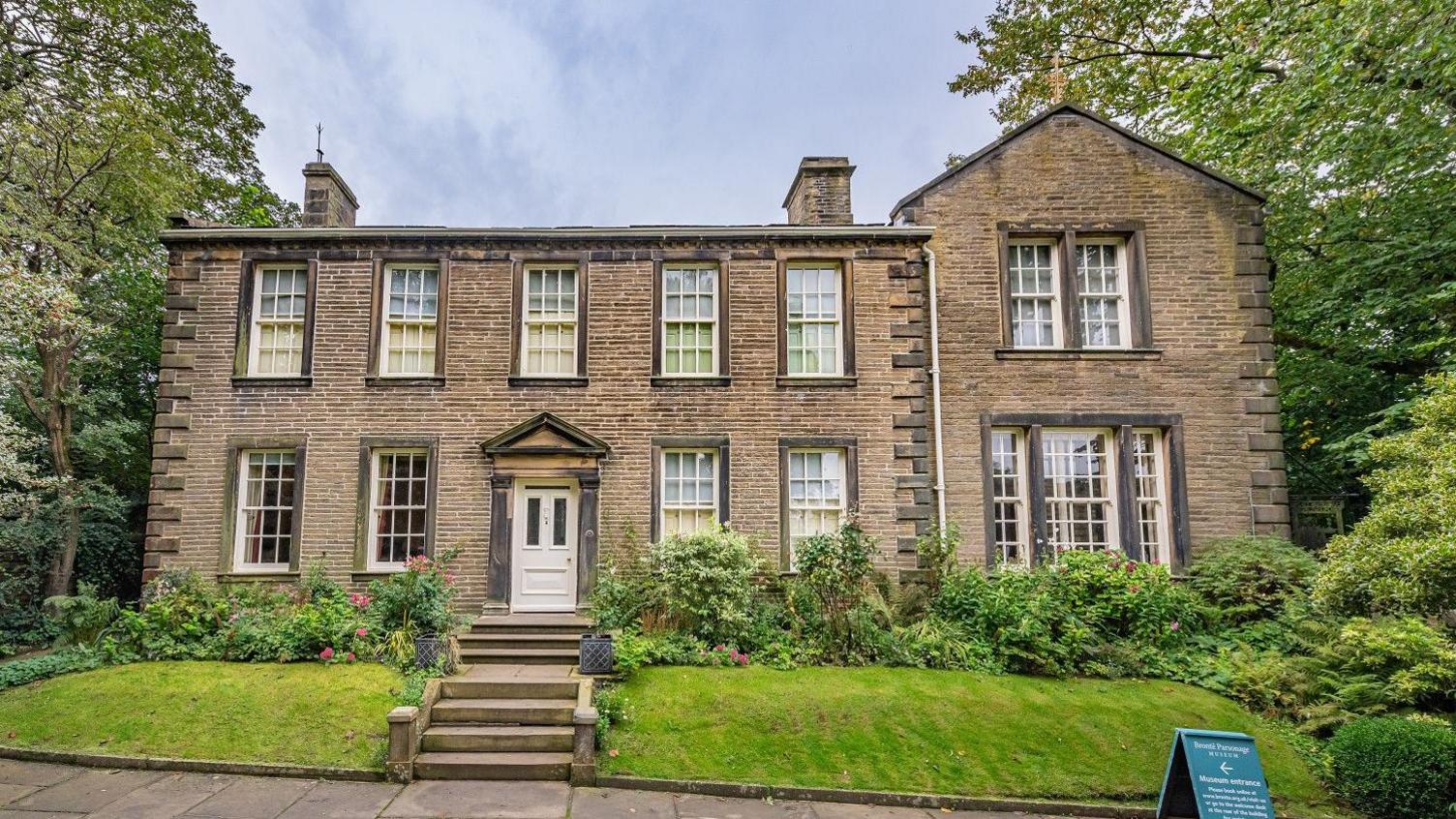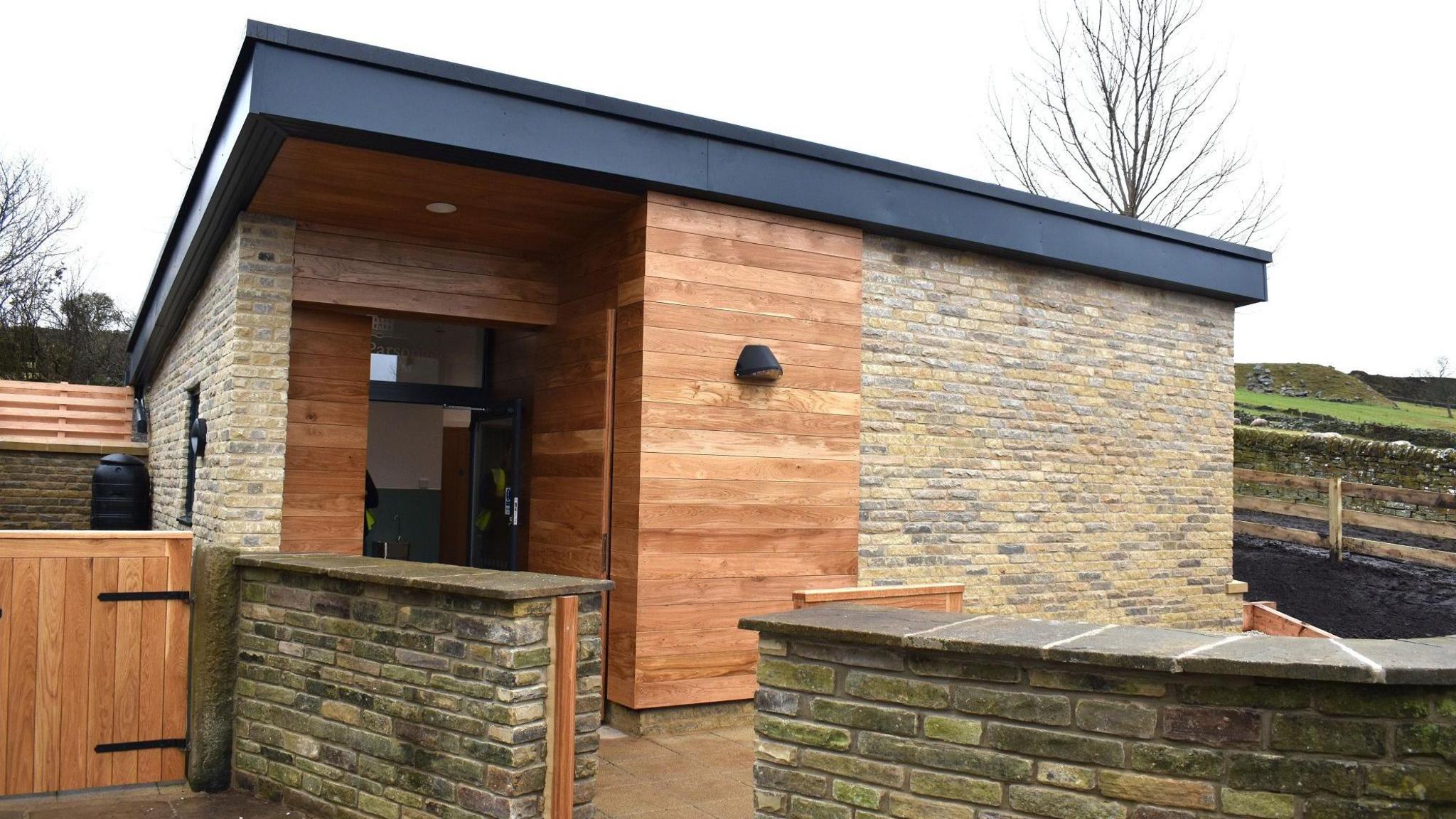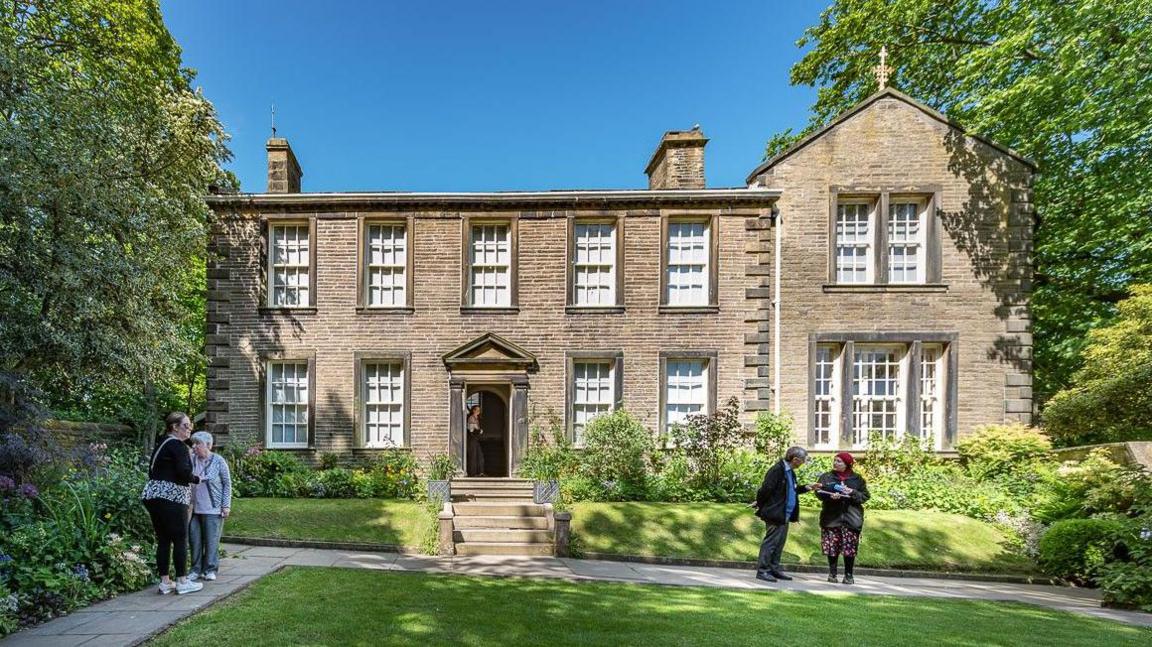How Brontë village became a tourism hotspot

The Brontë Parsonage Museum in Haworth was home to the sisters from 1821
- Published
An exhibition chronicling how the home of the Brontë sisters became a destination for literary pilgrimage opens this weekend.
The Brontë Parsonage Museum in Haworth - home of writers Anne, Charlotte and Emily Brontë - is hosting the Haworth to Eternity exhibition.
The display charts how the Pennine village became a tourist destination, showcasing letters, manuscripts, albums and other material from the museum archives.
Principal curator Ann Dinsdale said Haworth was "never a romantic place" before the Brontës "caused a sensation" with their novels in the mid-1800s.
'Literary celebrity'
She said: "It was a hard-working, industrial township and then in 1847 the Brontë novels were published under assumed names.
"They caused such a sensation when they were originally published that everyone wanted to know who the authors could be, and in 1850 it leaked out that they were three clergyman's daughters living in Yorkshire and people started making their way to Haworth.
"There was an idea very early on that all the places in the Brontë novels had actual, real-life counterparts so people started coming to Haworth.
"Charlotte was the sole survivor by that point and she witnessed literary celebrity and found herself being pointed out in church and being stared at in the village."
The exhibition includes Victorian souvenirs early tourists took from the village.
It also features scripts, photographs and props from TV and film adaptations of their novels, including Wuthering Heights, Jane Eyre and The Tenant of Wildfell Hall.
Brontë fever was kickstarted two years after Charlotte's death in 1855, when author Elizabeth Gaskell wrote an autobiography titled The Life of Charlotte Brontë.
Ms Dinsdale said: "Although Gaskell painted a grim picture of Haworth as this remote, inhospitable place with surly villagers, rather than repelling visitors it actually encouraged them so you started getting people coming from as far away as America to see where the Brontës had lived and written their novels.
"Quite often they wanted to take away a souvenir so all those people who had lived in Haworth, who had been associated with the Brontës, started being tracked down and persuaded to part with their Brontë artefacts."

It is the first time the parsonage has had toilets open to the public
The exhibition coincides with the opening of the museum's new toilets - the first time the parsonage has had toilets open to the public.
The toilet block – built outside the Victorian parsonage – was funded through more than £100,000 of grants from Bradford City of Culture 2025 and Arts Council England.
The block includes four toilets, plus an accessible Changing Places toilet with baby changing facilities.
Changing Places toilets provide equipment such as hanging benches or hoists for people with limited mobility.
Listen to highlights from West Yorkshire on BBC Sounds, catch up with the latest episode of Look North or tell us a story you think we should be covering here, external.
- Published8 May 2024
